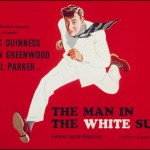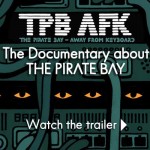
Terry Pratchett had written once, “The whole of life is just like watching a film. Only it’s as though you always get in ten minutes after the big picture has started, and no-one will tell you the plot, so you have to work it out all yourself from the clues.” A noble sentiment, indeed, which Steve Martin had sought to mirror in his inimitable style, “You know what your problem is, it’s that you haven’t seen enough movies – all of life’s riddles are answered in the movies.”
If the readers have not yet realized it, yes, I’d gladly confess that I’m indeed a die-hard aficionado of the reel, which I treasure almost as much as the real. Which is why I didn’t put up much of a fight, when I had been tasked with penning this account of films that have paid more than a lip service to IP and innovation. Worst case scenario, I had soliloquized, I get to watch several movies hitherto unseen; while at the best, I may get an interesting and entertaining insight as to how the different facets of IP and innovation have been treated in celluloid. The result is a list long enough that it is going to take me at least 2 posts to pay even the barest lip service to all the entries.
Now, at the onset, I’d like to warn the readers that this is by no means whatsoever an exhaustive list that I have drawn up. On the contrary, I would not even have known the ‘significance’ of some of these names in course of my discussion, had it not been for the kind assistance and pervasive celluloid knowledge of some of the coolest IP professionals whom I have come across in this quest. Ordinarily, I’d thought I’d perhaps come across at the most a dozen movies suiting my requirements, if at all. However, once the list got started, it has proved to have a mind of its own, one geared towards ensuring its continuing and prolonged existence.

Without much ado, I begin with the first name on my list, Flash of Genius. This is a 2008 American movie directed by Marc Abraham and starring the likes of Greg Kinnear, Lauren Graham, Alan Alda and Tim Eddis. It depicts the story of Robert Kearns’ crusade against the Ford Motor Company when the latter started marketing an intermittent windshield wiper that stemmed from the ideas that the former had patented. This movie, about which Swaraj had already blogged earlier here, is named after the terminology “flash of genius” that was used in the U.S patent law between 1941 and 1952, to mean that the inventive act must occur in the inventor’s mind as a sort of epiphany and not as a result of tinkering. The movie did not stray very far from the features of a patent-based lawsuit and ended with the jury declaring the matter to be an infringement, but not a deliberate one.

The next one in line is a movie that had been aptly titled Intellectual Property, although it was subsequently re-released as Dark Mind. This 2006 movie, starring Christopher Masterson and Lyndsy Fonseca with Bryan Cranston and directed by Nicholas Peterson, depicted an eccentric genius who is forced to confront the consequences of his own madness stemming from his efforts to protect his inventions from Russian spies and not to let them become the casualties of the Cold War.

Another entry in my list dates back to 1951, titled The Man in the White Suit, directed by Alexander Mackendrick and starring Alec Guinness as a brilliant young research chemist and former Cambridge scholarship recipient. After having been dismissed from several textile mills owing to his demands for expensive facilities and his obsession with inventing an everlasting fibre, he comes up with an incredibly strong fibre which repels dirt and never wears out. After an initial phase of glory, he is soon besieged with efforts on the part of the management and the trade unions of the textile mills to trick him into signing away the rights to this invention, because once marketed, it can eventually put the entire textile industry in jeopardy.
A similar plot line can be seen in Steven Schachter’s The Water Engine (1992), wherein the inventor, on having come up with an engine that runs only on water, seeks the aid of a patent attorney, but soon starts receiving life threats from the petroleum energy-based industrial establishment.

There have of course been documentary films geared towards depicting the various facets of the IP regime. One such fine example would be Good Copy Bad Copy, a 2007 documentary directed by Andreas Johnsen, Ralf Christensen, and Henrik Moltke about the current interface between copyright and culture in the context of Internet, peer-to-peer file sharing and other technological advances, particularly in countries like the U.S., Sweden, Russia, Nigeria and Brazil. The film, containing interviews of diverse stakeholders such as popular mash-up artists like the Girl Talk and the Danger Mouse, various copyright lawyers, filesharing service providers, as well as the CEO of the Motion Picture Association of America, acknowledges a contemporary shift towards user-generated content, mashup music and video culture. It goes on to examine the perspective that a balance has to be struck between protecting the IP owners and the rights of the future generations to create, given that “creativity itself is on the line.”

The readers, who are advocates of more and more creations being put in the public domain instead of adhering to a rigid and protectionist copyright regime, may be tempted to give The Last Station a watch. A 2009 biographical film directed by Michael Hoffman and starring stalwarts like Helen Mirren, Christopher Plummer, James McAvoy and Paul Giamatti, this movie beautifully renders the story of the last few days in the life of Leo Tolstoy and the successful attempts by his disciples to make him sign a will surrendering all his copyrighted works to the public domain following his death, leaving his family without any financial support derived from royalties. The movie, however, ends with the message that five years after Tolstoy’s death, the Russian Senate returned said copyrights to his wife Sophia.

For those interested in the IP-Pharmaceuticals interface, we have the very recently released hard-hitting Fire in the Blood in 2013. Directed by Dylan Mohan Gray, this intricate tale of “medicine, monopoly and malice” gives a chilling account of the manner in which Western pharmaceutical companies and governments had blocked access to low-cost AIDS drugs for the countries of the global south following 1996 that had caused deaths exceeding ten millions. The film contains valuable inputs from global figures like Bill Clinton, Desmond Tutu and Joseph Stiglitz.
Another addition in similar lines is the short film Brazil: Patents versus Patients, a 2000 production depicting Brazil’s stance against pharmaceutical companies for affordable treatment, by way of legally side-stepping international patents by exploiting a loophole in international trade agreements and producing and freely distributing AIDS medication through the health care system.
Decoding Annie Parker, a 2013 film directed by Steven Bernstein, tells tangentially the story of Mary-Claire King, the geneticist whose discovery of the BRCA1 gene and its link to breast cancer forever changed the understanding of human disease, and the significance of this discovery to the protagonist.

Another movie in the same line would be Lorenzo’s Oil, a 1992 movie directed by George Miller and starring veteran actors like Nick Nolte and Susan Sarandon. It is a touching story about a couple having no medical background struggling to find a cure for their young son, who is suffering from the fatal ALD disease. Undaunted by the medical community’s opinion of the disease being an incurable one, they keep on fighting an uphill battle, setting up camp in medical libraries, reviewing animal experiments, enlisting the aid of scientists, badgering researchers, questioning top doctors all over the world, and even organizing an international symposium about the disease. Finally, they come up with a type of oil from which an elderly chemist, after refusal by a large number of chemical firms, agrees to distill the proper formula for a cure.
The Constant Gardener, a 2005 movie directed by Fernando Meirelles and starring Ralph Fiennes and Rachel Weisz, centers around the protagonist’s crusade against a drug corporation that has been using Kenya’s population for fraudulent testing of dypraxa, a tuberculosis drug with known harmful side effects, in complete disregard of the well-being of the poor test subjects.
Yet another addition to the list of documentaries would be the 2010 movie Patent Absurdity (How Software Patents broke the System), that had been made by Luca Lucarini with a grant from the Free Software Foundation. Based on a series of interviews conducted during the U.S. Supreme Court’s review of In re Bilski, the film explores the case of software patents, the history of judicial activism that led to their rise, and the harm being done to software developers and the wider economy.

The Pirate Bay: Away from Keyboard is another documentary released in 2013 itself that tries to portray the various facets of copyright, piracy and freedom of information through the eyes of the three founders of the Pirate Bay, the world’s biggest peer-to-peer file sharing and torrent website and the lawsuits and prosecution against them.
A documentary of similar relevance would be the Copyright Criminals, released in 2010 and funded by the Ford Foundation. Directed by Benjamin Franzen, the film seeks to examine the creative and the commercial value of sampling including the related debates over artistic expression, copyright law, and money.
There’s the Imitation of Life, a 1934 movie starring Claudette Colbert, where Colbert builds a corporate empire from the secret recipe for pancake butter given to her by her maid and then ‘generously’ assigns a few shares of the company to the maid, a perfect example of the consequences of spilling trade secrets if ever there was one.

One of the most powerful scenes ever to have been portrayed in reel to demonstrate the commercial power of an unforgettable image in terms of trademarks and advertising, has perhaps been the scene in The Hucksters (the 1947 MGM film starring Clark Gable as a radio advertising executive), where Sydney Greenstreet spits on a conference table to show the same (once again, a scene pointed out by an IP professional).
Insofar as battle over trademarks is concerned, one cannot fail to mention the 1988 comedy Coming to America, starring Eddie Murphy, wherein a restaurant owned by Cleo McDowell, a character, is under investigation from the McDonald’s Corporation for allegedly copying their franchise, on the grounds of similar logos, typeface and the names of the dishes and Cleo was even shown in the film once to be reading a McDonald’s Operation Manual!
This brings the first part of the post to a close, chiefly because it’s getting to be too big and unwieldy. I’ll continue with delineating the list in the succeeding part, which you can find here.

Pingback: From Real to Reel: IP in Celluloid Part II | Spicy IP